Keyword research is often overlooked by the latest fad, funnel, or backlinking hack, however it's one of the most important pieces of your overall marketing strategy.
Starting with a wish list of terms you want isn't going to cut it either.
Inside this guide, I'll explain the process we use for finding and researching keywords for our SEO projects by using data from our competition's current rankings.
This allows us to see what's already working, replicate it, and even work to outdo it.
The Importance of Keyword Research
Let me explain something.
I was the guy that I just described.
Looking for the next shiny object and linking strategy glossing over the very foundation for my SEO business.
Here was the process I was using at the time...
- I'd look inside Google Planner for keyword ideas
- Research the traffic volume
- If it met 100 searches per day, I'd began targeting the keywords.
Sound familiar?
My Worst Nightmare
I was able to rank for a variety of very difficult keywords.
Broad search terms like Real Estate Investing and Mobile Marketing just to name a few.
Once I saw the sites started to pop in the top 10, my greed glands went into overdrive thinking about the new house, cars, and all the money that was about to be flowing in.
But it never did.
Here's what I didn't realize.
I didn't know what to do with the traffic to get it to convert.
It was too broad and took me entirely too long.
Search Intent Explained
Throw out the required, suggested search volume when targeting your keywords.
Instead, start looking at the search intent for your keywords.
Once I refined my process, I made a lot more money in a lot shorter of a time frame with much less search volume.
It all boiled down to the intent of the searcher.
The keywords can be broken down into the following:
That's how you break down all the potential keyword targets you're thinking about approaching with your SEO wether you're going after local terms or if you're starting a review blog.
The process I'm showing you today will work in both scenarios.
How to Use Your Competition for Keyword Research
Whenever I consult with a company, I'll ask them to give me a list of potential terms to look at.
Often, they don't know what terms to give me so instead we began with their top three competitors.
This is the easiest way to start your keyword research because as long as you have an idea of what you're wanting to target, you can reverse engineer their entire SEO strategy.
Start With Your Seed Keyword
If I don't know who my competition is, I'm going to open up an Incognito window and do a simple search like what I've done here using the sample phrase "best cowboy hats".
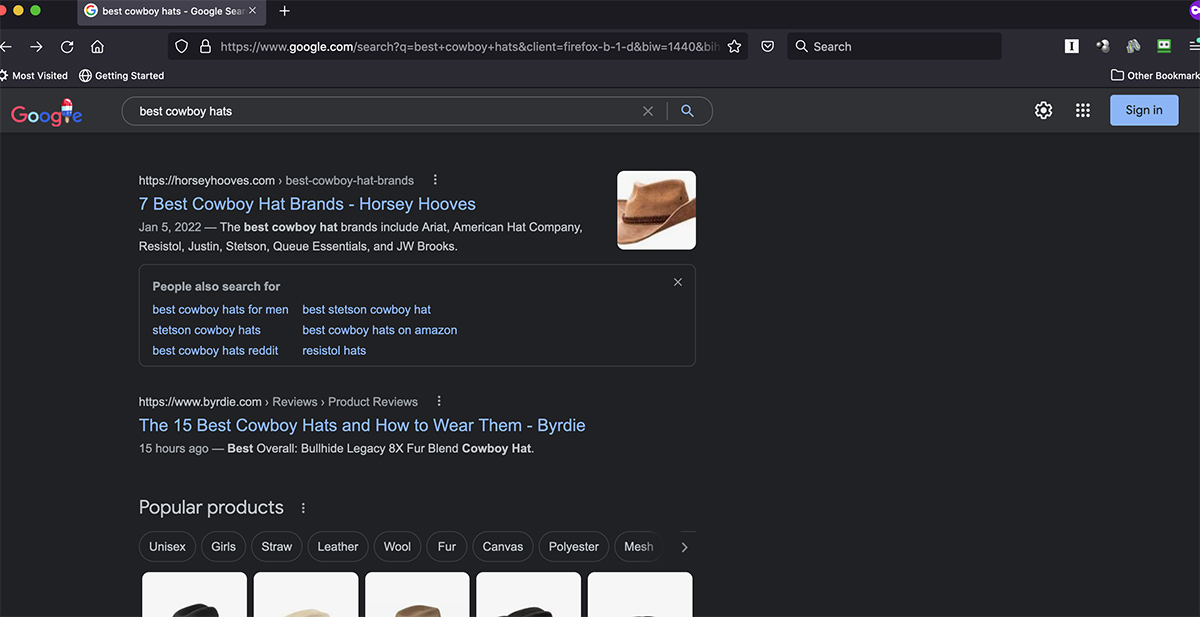
I should preface this to say I know nothing about this topic and only picked it because I've been binge watching episodes of Yellowstone.
But in this example, we'll take the top urls in this list and start doing our competitive research.
Competitive Research
We'll now take these urls and pop them into a tool like Ahrefs or SEMrush.
In this example, we'll be using Ahrefs.
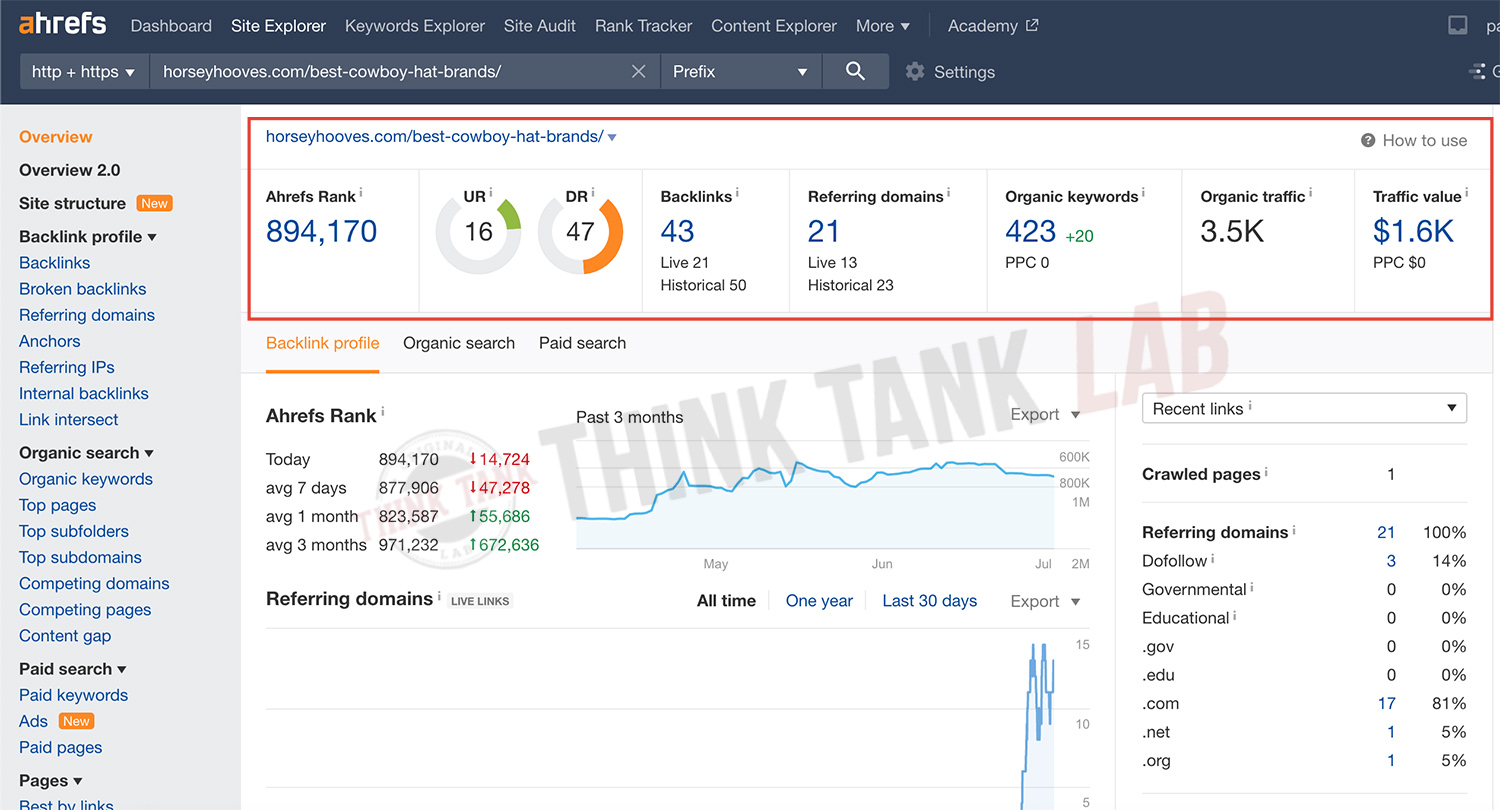
You'll see this specific page has 21 referring domains yet is ranking for 423 keywords.
Not bad for a single page.
We can now look at those individual keywords.
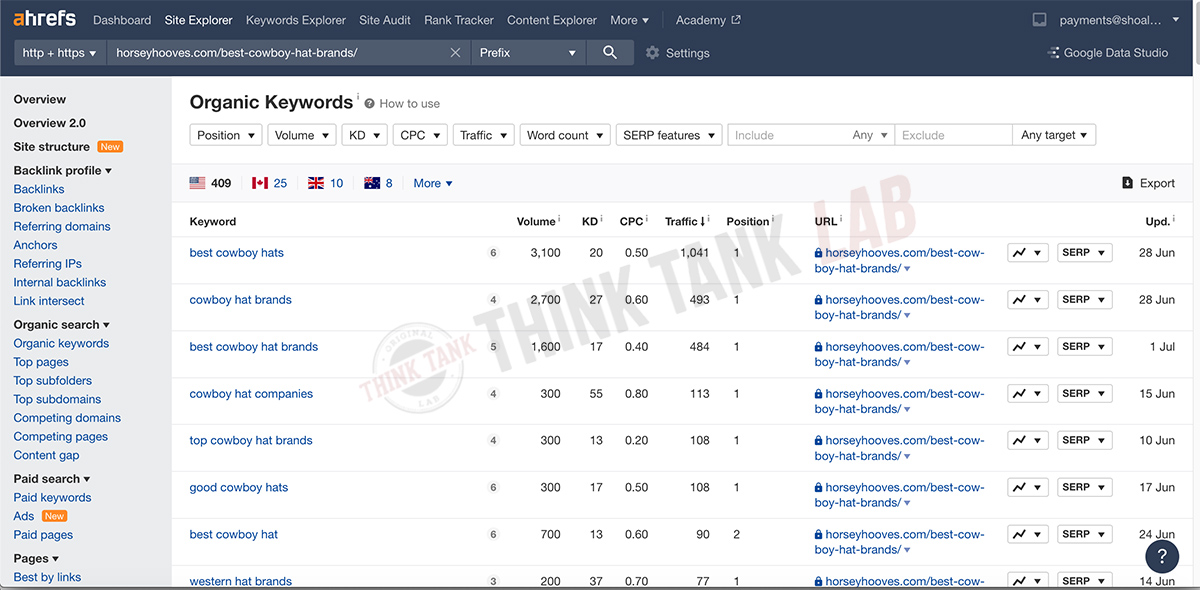
Here we see this particular page is ranking #1 for best cowboy hats with as search volume of 3100 as well as cowboy hat brands with an additional 2700 searches per month.
All from the same page.
Google sees these terms as being so close in relevancy that you don't need multiple pages to rank for these similar keywords.
This is something you can pinpoint inside Surfer's dashboard to determine if you need multiple pages or if a single page will do it.
Now we can export all of these keywords or sort for the highest search volume with the lowest keyword difficulty to start with.
But now, let's take this to the next stage.
Investigate The Domain
Instead of just investigating the page for all of it's keywords, we'll look at the domain as a whole to see what we can uncover.
Chances are good that it's ranking because of the following:
- Good onpage and content
- Core SEO elements are solid
- Good internal linking structure
- Domain authority
- Fills the content hub
The content hub simply means this domain has built content covering the entire topic creating topical authority.
This way not only are we uncovering potential keyword targets but we can also see what we're missing as well in our overall content strategy.
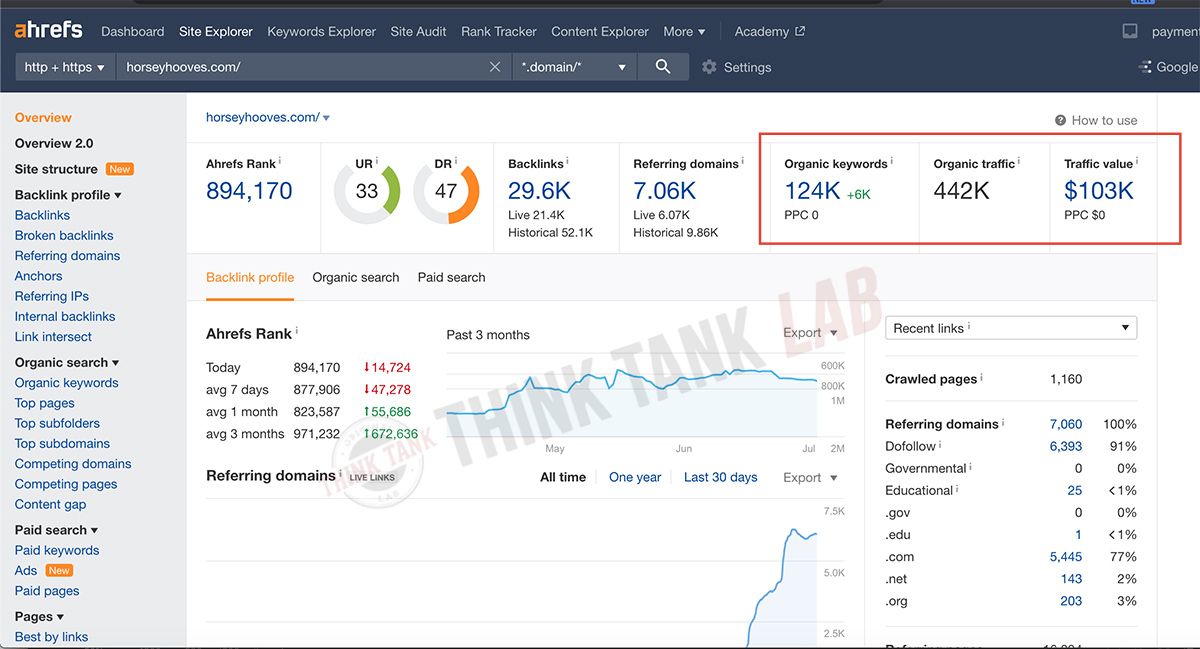
Now, that we're looking at the domain as a whole, you'll see there's 124,000 organic keywords with a traffic value of $103,000.
The traffic value is the estimated cost it would take to buy where they're showing up at.
As you can see, this site is doing pretty well.
So, 'let's take it a step further and look to see what these keyword are and what this site is primarily ranking for.
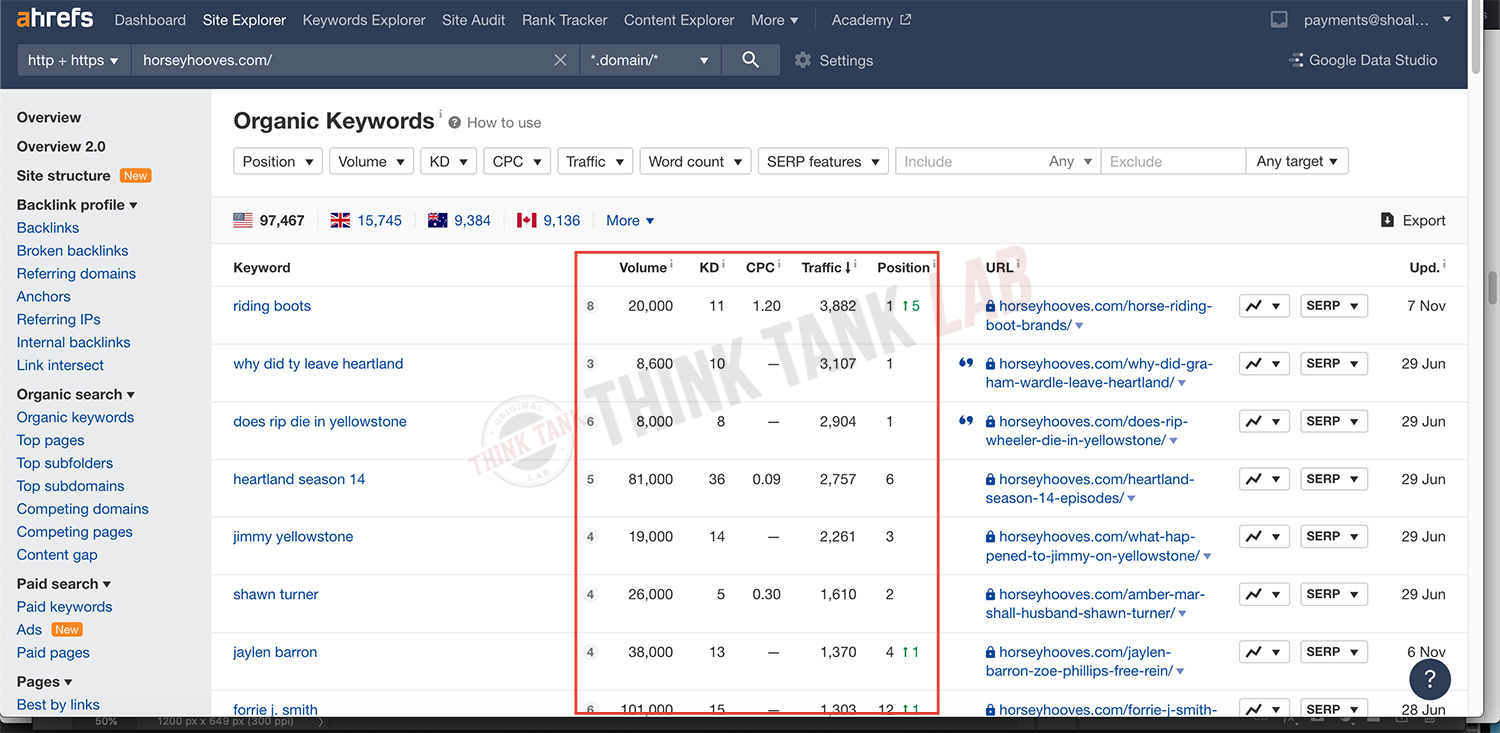
Inside, I've highlighted the estimated search volume, keyword difficulty, as well as the current position.
We can simply click on any of these urls to see what the page looks like, word count, formatting, content outline and then even dig into see what the backlinks are.
Spy on Their Top Performing Content
Next, we'll dive into their top performing pages, how they're getting traffic, and we'll even know what keywords they're showing up for.
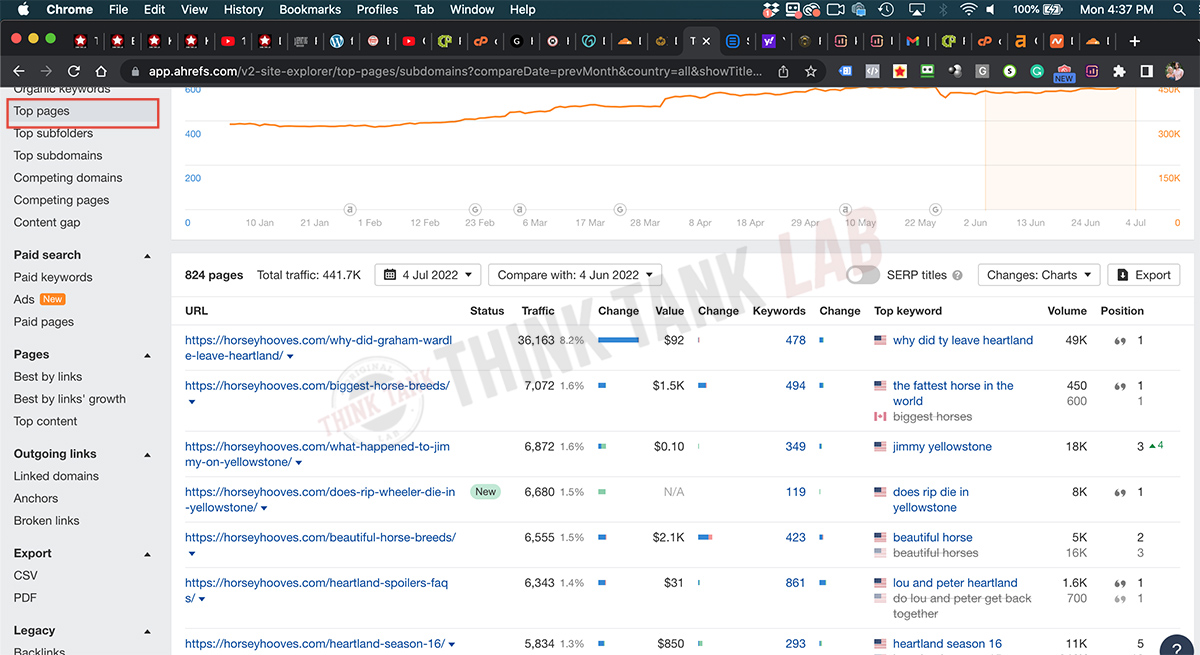
Here you're able to see the search volume and the top keywords for the most visited pages.
Content Gaps
A content gap is the content you're missing vs what your competitors may have.
For example, in this example, from a quick glance it appears they've built a decent sized, authority style site that outlines everything wester from cowboy hats down to the western type shows like Yellowstone.
By expanding the content like this, you're building out your content making it more authoritative in nature creating a content gap from those that are just blogging about Western wear.
If you're just getting started, your goal is to close this content gap.
You can see what content gaps you have against your competitor inside Ahrefs
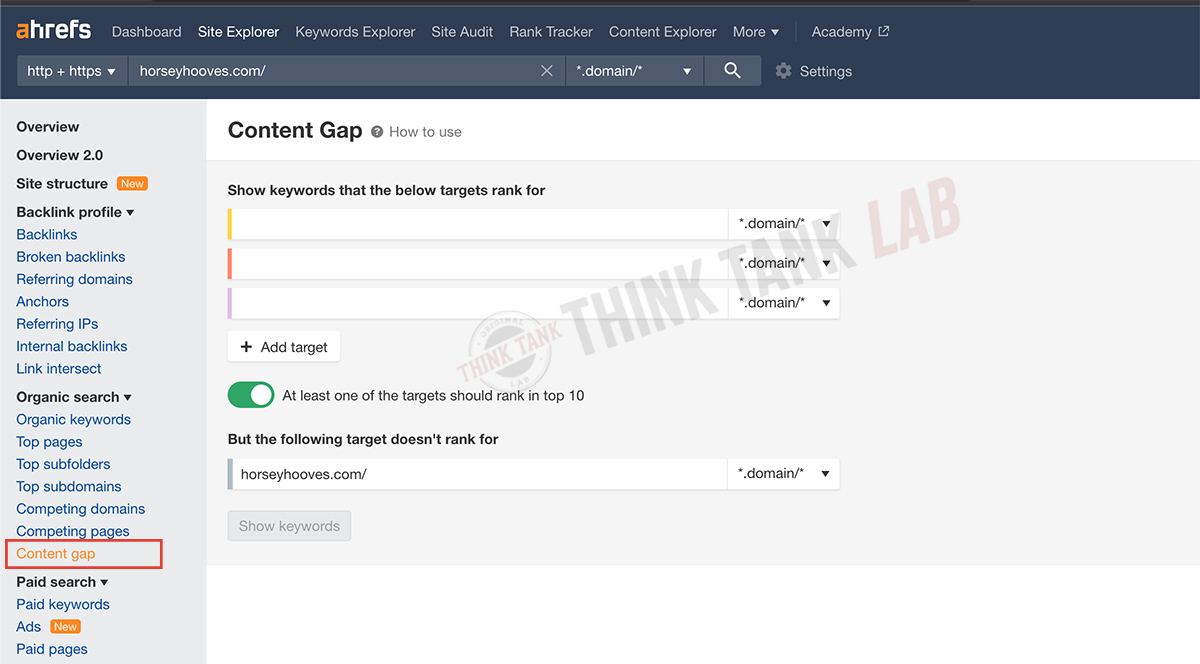
By pulling in this competitive analysis, you should start to see a good sized keyword list and have an idea of what you'll need to start building out your site.
The way we began our content when starting out depends on what our SILO structure looks like.
We'll map our our top of the hierarchy pages that are our most sought after keywords, then fill in the gaps to support those pages.
In the example above, our top pages may be the following:
- Best Cowboy Hats
- Best Cowboy Boots
Then we would create supporting pieces of content for individual reviews of the prodcuts, then a variety of how to terms like "how to dress for a cowboy wedding".
If you're just starting out, we'd work to fill the top pages first, then build out the supporting pages.
If you'd like to see how we do this, then consider jumping inside our training program here.
Content Planning
Another way to do this is to create a content planning campaign using Surfer SEO.
If you want to see it in action, then check out the Surfer review here.
The way this works is a little more streamlined because Surfer is giving you the topics pulling in data from what's already ranking in the top 10, analyzing their content and organizing it into content hubs.
So, you're not technically pulling keywords from your competitor, Surfer is analyzing the data for your seed keywords and showing you what all content you need to build.
All you do is open up Content Planner and enter your keyword like I have below.
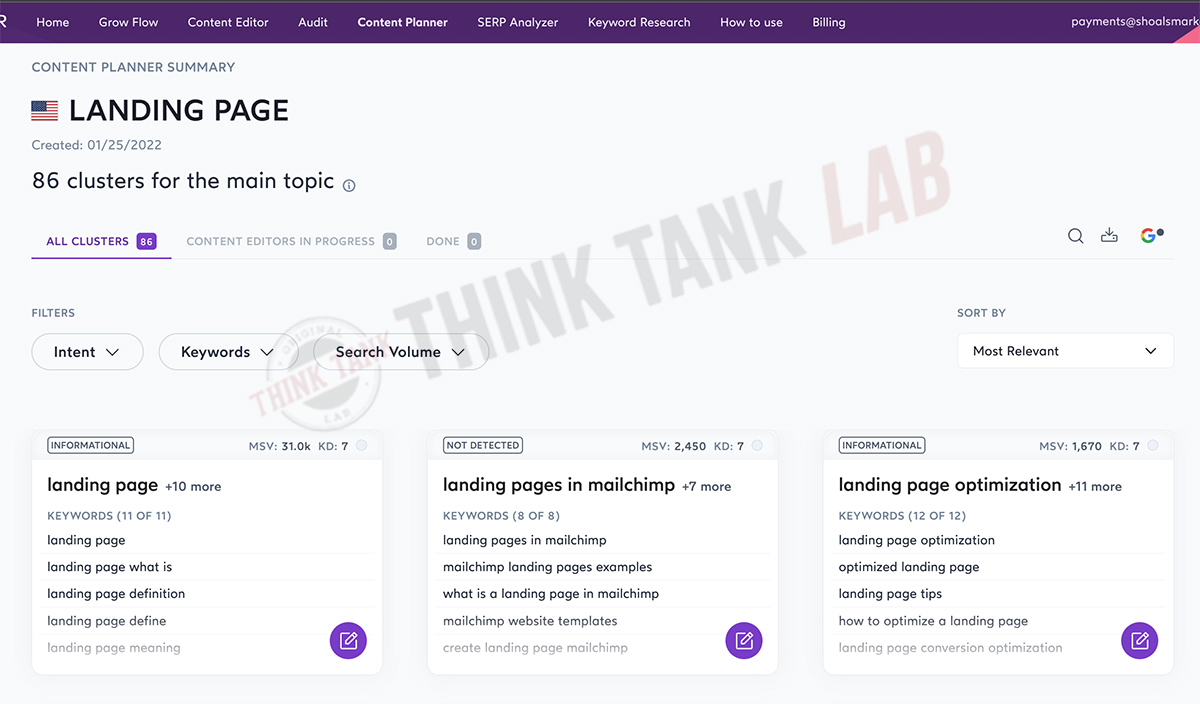
In this case, you see I entered the term landing page.
It in turn gives me 86 different clusters that can be separate pieces of content.
The great part about using this tool is you're able to see which terms are Information and those that have Buyer - Transactional Intent.
Wrapping Up
In my opinion, this is a much easier method to conducing keyword research.
To summarize our process with these tools.
- 1Get a seed keyword
- 2Find the top 3-5 competitors
- 3Analyze their current rankings
- 4See their top performing pages
- 5Analyze the content gap if I have existing content
- 6Take the parent keywords and plug them into the content planner of Surfer
That's how we come up with the keyword ideas, analyze those topics, then come up with a plan for what we'll build out next.

